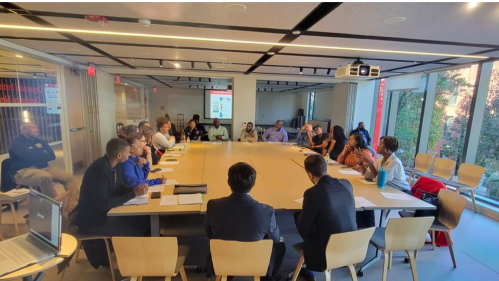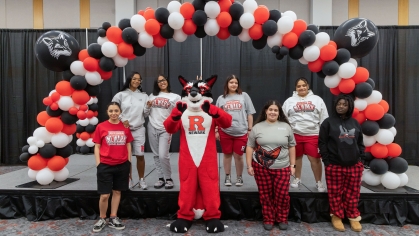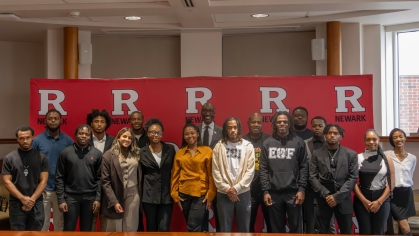Rutgers-Newark researchers whose data-driven collaborations with community organizations helped reduce crime in the city by 40 percent received a $3 million federal grant to expand their work.
The Newark Public Safety Collaborative (NPSC), created by School of Criminal Justice professors, analyzes locations associated with low-level crimes, such as abandoned buildings, vacant lots, and spots with poor lighting, rather than targeting perpetrators. It shares data with community partners and works with them to decrease crime.
“We put the focus of prevention on places and not merely people and open the door to non-police centric responses,’’ said Alejandro Gimenez-Santana, director of the Newark Public Safety Collaborative. “We’re advocating that instead of arresting your way out of the problem, you identify the problem so those areas become safer.’’
The approach, called “Risk Terrain Modeling” and designed by Rutgers-Newark faculty, provides data to police, city officials and community members. When the method was first applied in Atlantic City, it helped reduce homicides and shooting injuries by 25 percent from 2016 to 2017.
In 2018, the Newark Public Safety Collaborative was established in partnership with the Newark Mayor’s Office, sharing data on a bi-weekly basis with 45 community-based organizations, along with city government and law enforcement.“They are given the tools to be co-producers in public safety, meaning they all share the burden. They all play a role in the end,’’ said Gimenez-Santana.
The collaborative has since become a national and international model, with staff advising officials in Kansas, Dallas and Sweden as they develop similar programs, said Gimenez-Santana.
The $3.8 million grant, awarded by the Department of Justice, would allocate a third of the funds to three community partner agencies in neighborhoods with the city’s highest crime rates, where one of every two violent crimes in Newark occur, said Gimenez-Santana.
The organizations are Unified Vailsburg Services Organization, Newark Community Solutions, and Lincoln Park Coast Cultural District. They will be funded to create programs addressing risks in specific locations, such as at-risk bodegas or corner stores where youth often hang out.
“We’re trying to understand what’s happening based on the data, what are some of the conditions that are attracting or enabling this behavior and what can be done?’’ said Gimenez-Santana.
The goal is for organizations to draw upon their own knowledge to solve problems rather than dictating a solution. “Some agencies can offer outreach, others can do after school programs. The idea is to use their strengths in different ways,’’ said Gimenez-Santana.
In recent years, the collaborative has had great success partnering with groups on public-awareness campaigns and other efforts that have successfully decreased crime.
When data showed that an increase in auto theft was often due to cars left idling in commercial corridors, community partners, including the Newark-based Lincoln Park Coast Cultural District (LPCCD), circulated posters designed by a local contest winners to raise awareness. The result was a decrease in motor vehicle theft of over 40 percent over the final three months of the year.
The grant will enable groups like the Unified Vailsburg Service Organization to increase public awareness of crime spots and use the data in neighborhood planning efforts, said SanDonna Jones, the organization’s executive director.
“It’s a catalyst for us to meaningfully engage the community in its own public safety strategies,” said Jones, whose organization has worked with the collaborative since 2018. “Just making people aware of the simple things they can do to help prevent these crimes is extremely helpful.’’


